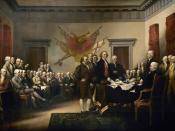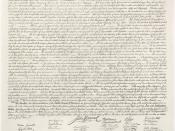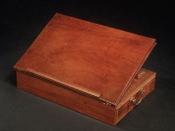On June 7, 1776, Richard Henry Lee proposed a resolution to the Continental Congress stating that "these United Colonies are, and of right ought to be, free and independent States." Four days later Congress appointed a committee to draft a declaration embodying the intent of the resolution. The committee, consisting of Thomas Jefferson, John Adams, Benjamin Franklin, Roger Sherman, and Robert R. Livingston, pressed on Jefferson the task of writing their report. On June 28 the committee submitted to Congress "A Declaration by the Representatives of the United States of America, in General Congress Assembled." The Congress passed Lee's original resolution on July 2, thus deciding in favour of independence, but took three days to debate and amend the committee's draft declaration before approving it on July 4. "The Unanimous Declaration of the 13 United States of America" (the Continental Congress never officially called it the Declaration of Independence) was engrossed on parchment, and on August 2 every member present signed it, the remaining members signing later.
The separation of Lee's resolution for independence from Jefferson's declaration suggests the prescience of Congress. It recognized that more was required on this auspicious occasion than a simple statement of withdrawal from the British Empire. The world was watching and a "decent respect to the Opinions of mankind" required a statement of causes and principles. Fortunately, Jefferson did not fail them. The declaration presents in brief compass the fundamental premises of American nationhood: "that all men are created equal, that they are endowed by their creator with inalienable rights," and "that to secure these rights, governments are instituted among men, deriving their just powers from the consent of the governed."
Looking back more than two hundred years later, the reader focuses on these brief phrases in the declaration and wants to know...


